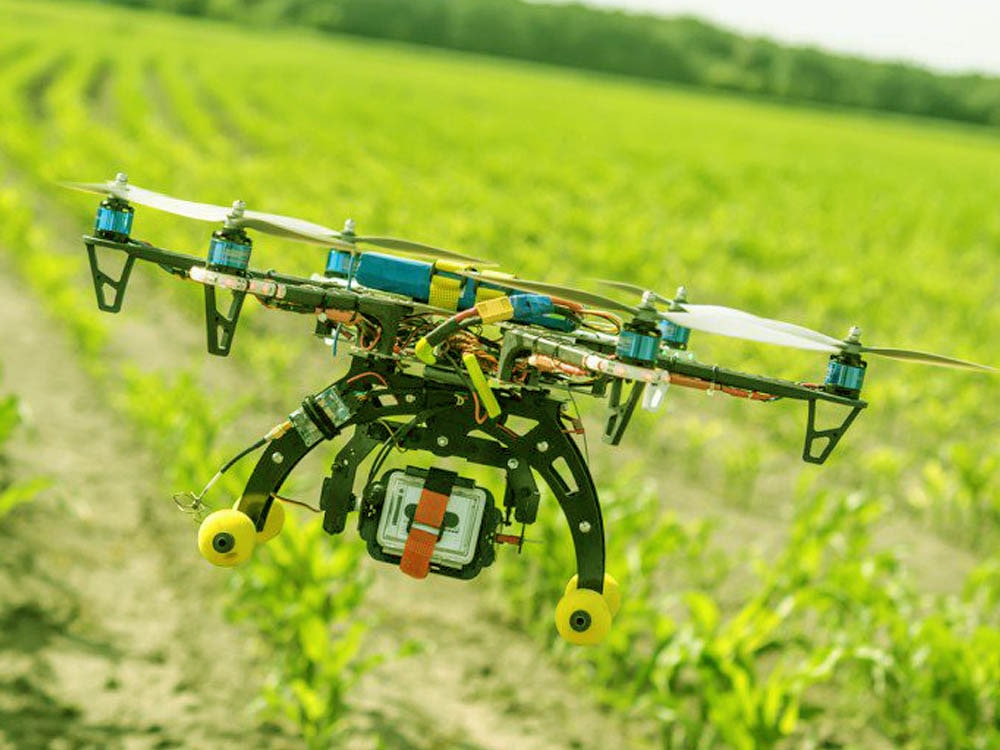Computers can learn patterns and imitate the same. This is the concept behind machine learning. We come across numerous such examples of machine learning as in gaming, voice recognition, autocomplete features in our email, etc.
If a particular industry has enough historical data to help the machine “learn”, machine learning or ML can produce magical results. Farming is also one such important industry benefiting and progressing from machine learning at large.
Farming with the help of technology to include IoT, AI, and machine learning is called smart farming. According to Statista, by 2020, the market value of smart agriculture is predicted to reach around 27 billion USD. (Source)
How Does Machine Learning Apply to Farming?
Machine learning works by identifying a pattern from the data provided. Consider a simple example of voice recognition technology. In this, the machine is trained on large volumes of voice and matching text data, such that it can slowly identify the spoken words and convert these to text. As it gets more and more data, the learning improves and thus the results also improve. This is how voice recognition tools are becoming more efficient each day.
Farming is another major area where machine learning has great perks to offer. ML can potentially contribute to the complete lifecycle of farming, at all stages. This includes computer vision, drones, automated irrigation and harvesting, and robots for automated picking of the raw crop.
Smart Farming Using Machine Learning
In this fast-updating technology era, everything is getting smarter, and so is farming. Let’s see the benefits of machine learning for smart and precision farming.
1. Selection of Crop
The root of smart farming is to take the right approach from the first step itself, which is the selection of the right crop for a particular field based on crop quality, disease resistance, adaptation ability, soil type, climatic conditions, and season.
With decades of research data provided to machines and proper algorithms, machines can identify patterns and group this data to draw predictive conclusions. Thus, ML can guide the farmer as to which crop would be most lucrative for his field.
ML can also precisely provide information about rotational farming for seasonal crops. This can ensure that the farmer’s field is profitably utilized for different seasonal crops over the entire year if his market or business has a higher demand for seasonal crops.
ML also guides about the right or superior-most variety or species of a particular crop, based on the performance data of these in similar conditions. This ensures the highest returns to the farmers. The farmer also gets information about the crops that have survived successfully even in less monitored and harsher field conditions.
2. Optimal Irrigation
Fields need a monitored irrigation system. ML helps with the task of ensuring optimal irrigation based on past data about the moisture requirements of the specific crop and field soil. As excessive irrigation can damage certain crops as much as poor irrigation, optimal irrigation had been a major challenge for farmers before machine learning came to their rescue.
The ML robots also have the ability to sense the field moisture conditions in real-time and ensure that irrigation is optimal and evenly distributed. It is impossible to accurately achieve this with manual farming.
3. Drones – Unmanned Aerial Vehicles
Studies and surveys show that the use of drone planting systems has reduced the planting costs by 85%. (Source)
Only relying on the long-term data, is not enough. Real-time data is collected using field video cameras and sensors. While sensors help collect the data, robots manage and monitor the crops. ML algorithms use a combination of all the data to compare and identify signs of disease or damage. For example, the condition of the leaves, as visible in this image, provides great insight into the overall health of the plants.

Image Credit: Macceek, Wikimedia Commons
Drones carry scanners, which assist in precision-monitoring of large fields on pre-programmed routes. These use computer vision for recording images all over the field. These images are then used for creating multispectral images for detailed analysis of plant count and height, crop health, quality, detecting diseases and weed, and water needs. This helps predict the overall crop yield.

Image Credit: Imperial College London
4. Appropriate Use of Fertilizers & Pesticides
Fertilization of soil involves huge investment in terms of time and cost. Machine learning can assess the optimal fertilizer requirements and prevent loss to crop due to sub-optimally fertilized soil or even cost issues due to the overuse of fertilizers. Robots can also aid in evenly spraying the fertilizers to get the best yield.
Research suggests that approximately 5.6 billion pounds of pesticides (source) are used worldwide every year. With real-time images and decades of data to compare the patterns of crop disease conditions, ML algorithms can assess and reduce pesticide consumption to a great extent.
Pest identification apps help identify the pest from its image and then the apps suggest the right pesticide. Robots help spray just the optimal amount of pesticides to the field, as higher amounts of pesticides can pose a health hazard to the consumers.
5. Harvesting Robots
For large-scale farming, labor costs form a major part of farming expenses. Like many other steps in traditional farming, harvesting also requires a significant labor force. Any delay in harvesting may spoil the quality of crops and also delays the returns from investment.
The ML empowered harvesting robots accurately identify and harvest the crops at the right stage. This not only saves a lot on labor costs but also ensures that quality crop is harvested and delivered to the consumer at the perfect time.
6. Last But Not The Least – Livestock Farming!
Talking about farming, how can we forget livestock farming? The ML techniques and tools used for crops are also being used in livestock farming.
Machine learning helps analyze the number and requirements of livestock. Aerial images and sensors are used to monitor the health and number of livestock on the farm. Weight predicting systems leverage machine learning to predict the future weight of each animal way before slaughter day, so that required steps can be taken to improve the same, beforehand.
ML ensures proper livestock health on the farms by monitoring and providing information and analysis on their movement, diet changes, and other significant behavior patterns.
Wrapping Up!
The use of machine learning in farming is still at a primary stage at present. With time, more and more useful data collected will enable ML to achieve magical results in improving farming at all stages.
As quoted by Allan Savory, “Agriculture is the foundation of civilization and any stable economy.”
Farming is the root of all major businesses. Improved farming leads to a better economy. So, let’s leverage ML to build smart farms and smarter economies! Looking for expert advice to implement Machine Learning in your business operation? Talk to us now.
Don’t forget to share this article, if you find it useful!






